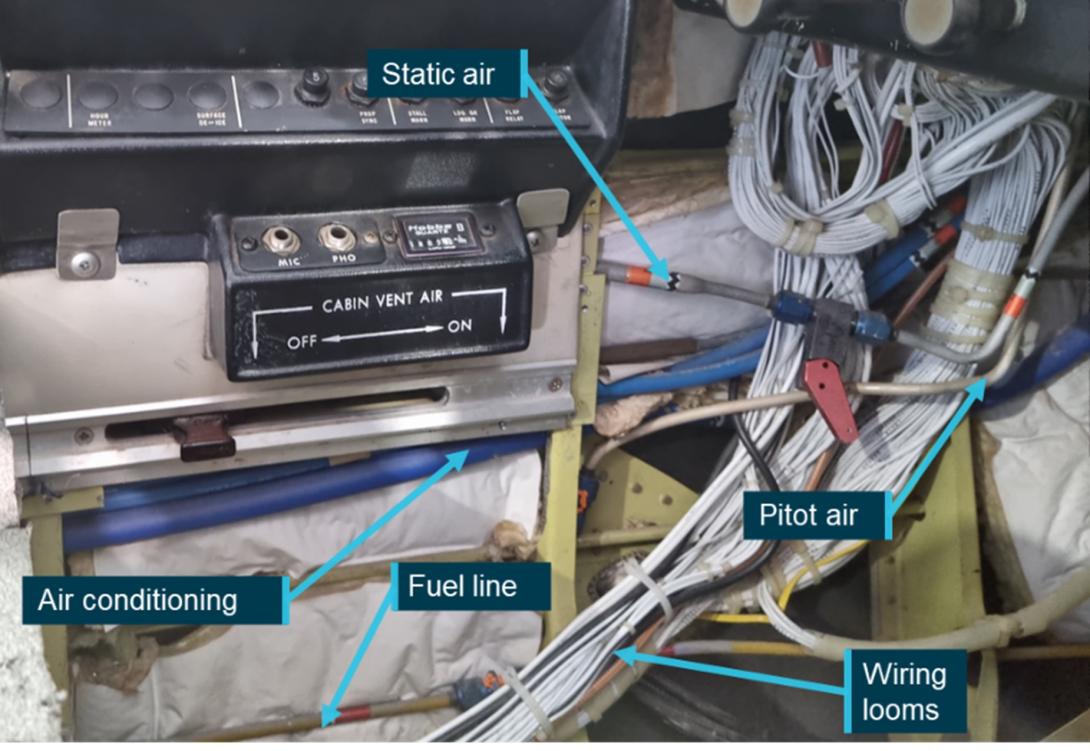In-Flight Fire, Terrain Collision Investigation

An in-flight fire and subsequent collision with terrain of a Beechcraft Baron near Kununurra, WA demonstrates the danger damaged electrical wiring can pose to safe flight, an (ATSB) Australian Transport Safety Bureau final report explains.
The in-flight fire ignited in the Baron’s cockpit during its approach to land at Kununurra’s East Kimberley Regional Airport on the morning of April 16, 2022.
Despite expending the contents of a portable fire extinguisher, the in-flight fire quickly filled the cockpit with flames and thick smoke, preventing the pilot from effectively seeing external visual references or the aircraft’s instruments.
The loss of visual cues combined with the direct heat of the fire meant that the pilot was presented with significant difficulty retaining control of the aircraft.
The aircraft subsequently diverged from the runway centreline track and collided with the ground, coming to rest inverted about 600 metres beyond the Ord River and about 800 m from the Kununurra runway threshold.
After the impact, the seriously injured pilot managed to extract themselves and the sole passenger out of the wreckage before it was destroyed by fire. Unfortunately, the passenger succumbed to their injuries.
The ATSB’s transport safety investigation determined that a fault associated with the landing gear electrical system likely ignited fuel from the cabin heater supply line, resulting in the significant and sustained cockpit fire.
“The fuel line to the aircraft’s cabin heater passes through the area where the pilot reported the fire initiated, and multiple looms of electrical wiring pass through that area as well,” ATSB Chief Commissioner Angus Mitchell said.
“The fire coincided with multiple unusual indications and a burning smell as the pilot attempted to extend the landing gear.”
A breach of the cabin heater fuel line likely created a fuel source, and an electrical fault within the aircraft’s landing gear system provided an ignition source, for a rapidly spreading and sustained fire in the cockpit.
The investigation report cites four other occurrences in Australia and the United States involving in-flight fires in Baron aircraft, with damaged wiring identified as a likely factor in three of these instances.
Early on in the investigation, the ATSB issued a Safety Advisory Notice to operators of the Beechcraft Baron, urging them to inspect their aircraft’s heater fuel line to ensure electrical wiring is not rubbing or chafing against it.
“Damaged electrical wiring can pose a range of hazards to the safety of flight, including loss of electrical power, malfunctioning systems, and in-flight fire,” Mr Mitchell said.
“This hazard is further increased when wiring is proximal to lines carrying flammable liquid. Maintenance organisations and operators should review current practices for the prevention of damage to wiring and ensure that all available steps are being taken.”
The investigation final report also details findings around the survivability of light aircraft accidents.
It notes the pilot’s four-point harness provided a better restraint and attenuation of impact forces compared to the best available option of a three-point restraint in the rear of the aircraft.
“Four-point restraints, where available, provide increased survivability,” Mr Mitchell said.
“And where available and practical, rearward-facing passenger seats improve frontal impact protection and survivability in an accident.”
Read the final ATSB report: In-flight fire and collision with terrain involving Beechcraft B58 Baron, VH-NPT near East Kimberley Regional Airport, Kununurra, Western Australia on 16 April 2022.



